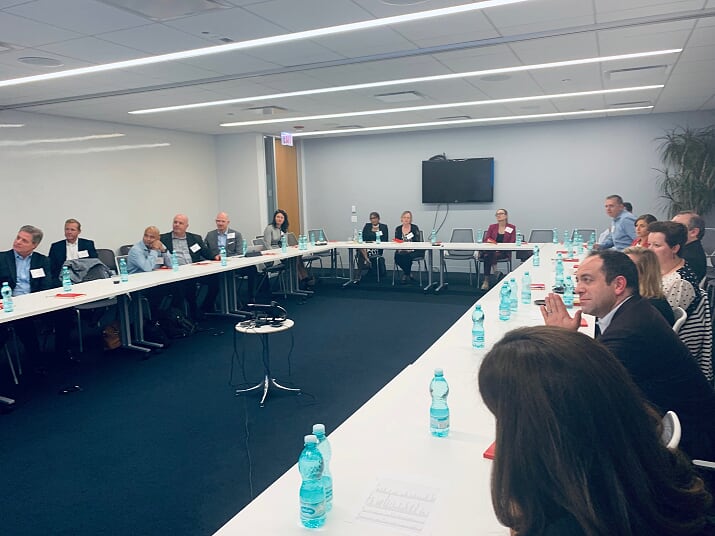 Artificial intelligence is currently disrupting your job – whether you know it or not. For financial planning and analysis professionals, artificial intelligence is an opportunity to improve business models and offer better strategic insights.
Artificial intelligence is currently disrupting your job – whether you know it or not. For financial planning and analysis professionals, artificial intelligence is an opportunity to improve business models and offer better strategic insights.
At the fourth Chicago FP&A Board, which was sponsored by SAP and Robert Half, FP&A Trends Managing Director Larysa Melnychuk introduced the current way FP&A analytics are computed. Citing Gartner, she described the four stages of analysis:
- Descriptive analytics – understanding what happened;
- Diagnostic analytics – understanding why something happened;
- Predictive analytics – predicting what will happen;
- Prescriptive analytics – foreseeing and planning what must be done to achieve objectives.
Driver based planning concepts attempt to bring together key external and internal business drivers to model effects on return on assets and return on equity, among other concerns.
The Chicago FP&A Board met again in the Protiviti offices in Chicago’s Loop and delved deeply into examples of how members employ driver based planning in their companies. A common theme across comments from multiple participants is that driver based planning is more analytical and less judgmental than other forms of analysis. The forecast is not driven by opinion, which allows for more focused collaboration across cross-departmental functions. Corporate decision-makers are more concerned with causing variables to move in a positive direction than in departmental squabbles. Larysa Melnychuk notes that driver based planning is the key driver of an “improved corporate vision.”
Classical FP&A driver based models provide a linear forecast. Regardless of how complex the model is, data is projected at the aggregate level. With predictive analytics, granular level data can create much more complicated and accurate forecasts.
Most importantly, predictive analytics and digital FP&A allows for data to be provided in a more timely manner. According to the 2019 SAP FP&A Empowerment Survey, only 9.6% of executives “believe they have all the right data in a timely manner.”
Case Study: Experience with Business Drivers & Predictive Analytics
Frances DeBlasio, VP of Financial Planning and Analysis at Cars.com, offered a case study on predictive modeling. To begin making recommendations about the use of predictive analytical models, DeBlasio reminded participants that the first and most important variable is understanding the data quality and governance within a corporation. No two corporations are alike, and one must understand the maturity of the organization one is dealing with prior to making changes.

From her experience at Cars.com, United, and elsewhere, DeBlasio maintains that the first part of the process of implementing a system of predictive modeling is to understand the sources of organizational data. Second, the data must be clean – create a uniform process. Third, make sure to manage expectations across departments. Models will not be perfect, but can improve over time. Fourth, “set standards for modeling early and strictly follow them.” DeBlasio contends, with regard to “the planning process…having a very regular cadence of your planning, the more regular it is, the more predictable it is, the better the modeling.” Fifth, a good model should become better with time and adapt to the needs of the organization. DeBlasio contends, “Most mature models are built in a very flexible and sustainable way…. If you have a standard approach to your modeling, you will begin doing it better and better.” Sixth, talent recruitment is key. Your team members determine the success and accuracy of your models and how well your system is maintained over a period of years.
Conclusion
The session concluded with the board agreeing that most companies are currently in the phase of change management. There is a current emphasis on cleaning and correctly aligning data, implementing new predictive analytics models and artificial intelligence, but remaining flexible.






